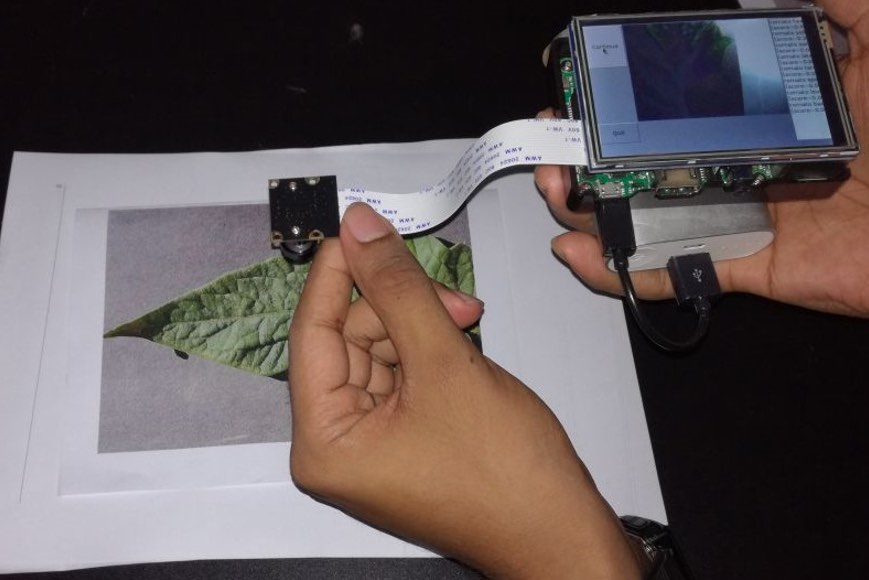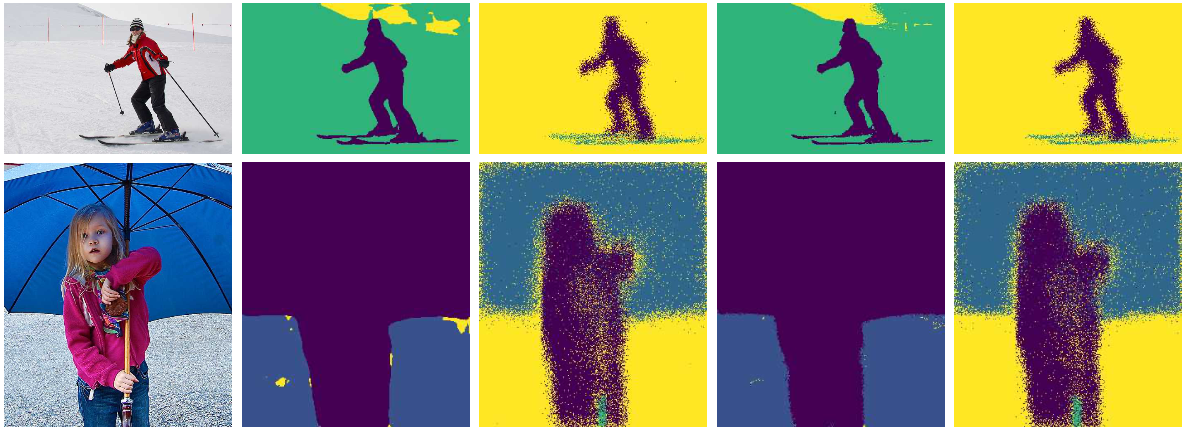Page Not Found
Page not found. Your pixels are in another canvas. Read more
A list of all the posts and pages found on the site. For you robots out there is an XML version available for digesting as well.
Page not found. Your pixels are in another canvas. Read more
This is a page not in th emain menu Read more
Published:
After a long nap on the bus from Heathrow to Cambridge Read more
Published:
The building is so cool! And so are all the people. So I begin my first internship at a tech company here in Cambridge working with the computer vision research team. Getting familiar with their code base, and working on a simple issue on my own, I begin a new page in my life. Read more
Published:
Machine Learning (ML) is something really hot these days and thousands are learning it. Day by day it’s becoming easier to run implementations using APIs with little knowledge. Learning ML includes three things: understanding the mathematics behind algorithms & optimizations, coding out simple, efficient implementations, and getting familiar with the most common ML libraries and platforms. I started off following the Machine Learning MOOC by Andrew Ng on Coursera. This gives a good introduction to machine learning (https://www.coursera.org/learn/machine-learning/home/welcome). This doesn’t really require a lot of mathematical knowledge. It is a beginner’s course. It uses MATLAB. I suggest running through this course as fast as you can. Just get an overall understanding about the stuff. Try to apply these in some projects you’re working on. At the same time, I set up Python with Spyder (my favourite IDE on Windows) along with Tensorflow, Keras, and a few other ML libraries (this can be time-consuming if you’re not familiar). However, I started off running most of the algorithms I learnt using Numpy in Python (so I had to code everything from scratch). This gives a good grasp over the basic concepts. I also looked at a few implementations on this site: http://deeplearning.net/tutorial/. I tried implementing them from scratch (mostly non-deep learning algorithms: the traditional ML ones). Afterwards I looked at the Deep Learning Specialization on Coursera offered by the same Professor (https://www.coursera.org/specializations/deep-learning). This explores Deep Learning, which is one of the hottest areas in ML these days. It gives you a good understanding of how to implement the work you do in both Numpy, and Tensorflow. This will take some time, and you should definitely begin a project on your own while doing this where you will apply these things. Also I read up on a bit of Linear Algebra: about Eigen Values, Matrix Decompositions, Subspaces, etc. This helps us get a good understanding of some of the concepts behind these areas. You will need to decide what you want to work on: pure research or innovating applications. For pure ML research, a strong mathematical understanding of concepts will be essential. Even for applications, this will be useful, but familiarity with implementations and optimizations will be a lot more useful. Also, after you’re familiar with ML, you can spend some time every week reading a few top research papers in the area. Read more
Published:
Published:
Published:
Published:
Winds of morn ruffle all leaves around,
The nest awakes by that shuffling sound,
Spears of sunlight tear apart the green,
Endless skies around so much they mean.
Read more
Published:
Published:
Another year is gone with many a merry,
Days and nights embedded deep in memory,
Colourful days with many an amazing friend,
All good things must come to an end,
Yet what’s gone’s not to fret and cry,
But to learn your faults to stand up high.
Another year is gone but another comes ahead,
Filled with mystery and days unknown instead,
May be joy may be pains the coming year,
Be made of, but it’s not for us to fear,
All one needs is friends in life to love and cheer,
Let me wish you and all have a happy new year! Read more
Published:
Published:
Published:
Uno, dos, tres……
Counting in Spanish for the first time in my life was perhaps the least significant happening during my tour in Latin American Colombia for IMO 2013. Over one day of flights all the way to the other end of the world left our team of seven (with deputy leader) totally exhausted. We were staying at a lovely beach resort. Despite the exhaustion we had explored half the resort in a couple of hours.
The first few days were quite intense as we kept thinking of the exam whilst doing those last minute preparations. Nothing that significant happened apart from some vain attempts to communicate with the hotel staff who had miserable English.
It was finally day one. My first time at an IMO. I managed to get through the first question pretty fast. The second turned out to be difficult. I didn’t really try the third after finding it completely out of my bounds. I got back to the second and spent the remaining time trying to figure out what I could. Although I was quite passionate about mathematics I was a beginner and I realized what little knowledge I had after discussing the paper with others around.
Day two was bad. I was stuck in the first question. After an hour or so I switched over to the second. No clue there either. The third was pretty much the same; or even worse. I went back to the first and kept working on it to get through somewhere. At last time was up. I walked off feeling neither happy nor sad.
Soon the fun element of our tour to this Caribbean beach resort kicked off. Some crazy out of the world adventures we had and some unique individuals we met are memories I still cherish. Pushing each other into the pool early morning and trying out those funny looking dishes for lunch (turned out to be super tasty) and beach volleyball and dancing along the sand all evening were indeed joyful.
Soon the last day arrived and the time for the award ceremony came up. Our team mate winning a bronze medal was the highlight of the evening for us. I was delighted to discover that I had been placed among the top 300 in the world. It was definitely one delightful day for everyone.
As the say all good things must meet their ends. The tour wrapped up as we headed for the airport grumbling a bit as the thought of the over 24 hours of flying time before us crossed our minds. But it was difficult to keep that laughter of gaiety off for long. Thus we bid farewell to that memorable city of wonders, each of us taking home memories that were to last a lifetime.
Read more
The project focused on researching on action recognition in videos. We explored individual contribution of static and motion domain information for action recognition and succeeded in establishing the presence of optimal contribution ratios. Using Cholesky transformations based control of correlation to parents of fused feature vectors, we managed to experimentally validate our findings. Additionally, we explored the role of underlying temporal trends of video sub-events in recognizing compound actions. Tasked with modelling that temporal trend, individually I experimented with recurrent neural networks (RNNs) considering their greater representation capacity, and established their optimality over traditional techniques for our use case of modelling temporally evolving feature vectors. This work resulted in two peer-reviewed publications at DICTA 2017 and TCSVT 2019. Code for the RNN component of this system is available here. Read more
Designing a plant disease detection system aimed at helping small-scale cultivators and home gardeners. In collaboration with a plant virus indexing centre, we were able to tested our product closely with a number of selected cultivators. We focussed on utilizing multi-spectral image feeds (NIR/RGB spectra) and implementing transfer learning based training of CNNs on small datasets of domain-specific images. The product was deployed using a mobile app with edge inference and recognized as a Top Initiative at National Tech Awards. Initial versions of the product were also developed as a raspberry-pi based system and later an FPGA based system. Code for the raspberry-pi based system is hosted here.



Read more
Research on combining Siamese Trackers and recurrent neural networks (LSTM) to simultaneously exploit appearance and spatial information for multi-object tracking, developing unique approach for occlusion aware object tracking, and analyzing effectiveness of BEV space projections for spatial tracking. Code for the this project is available here. An initial outline of the work done is present on arxiv here.
![]()
![]()
Read more
Research on panoptic segmentation using conditional random fields. Worked on development of a novel information fusion layer, for optimum combination of semantic and instance segmentation network outputs. Bipartite Conditional Random Fields (BCRF) uses an energy function containing cross-potential terms between the outputs of two parallel deep neural network heads to produce an optimal panoptic segmentaion condition on the original image. The BCRF layer uses a cross compatibility function between each pair of thing and stuff classes, which is completely learned using the data distribution. Our work was able to achieving state-of-the-art performance on selected popular datasets. The novel layer is also more interpretable and is inline with our intuition about compatibility between classes. Code for our work is hosted here. Our BMVC publication and oral presentation can be found here.

Read more
Published in DICTA, 2017
This paper is on Activity Recognition in Videos using Deep Learning. Read more
Published in TCSVT, 2019
This paper is on Activity Recognition in Videos using Deep Learning. Read more
Published in BMVC, 2020
This paper is on Panoptic Segmentation using Conditional Random Fields. Read more
Published:
Presentation of our paper titled Bipartite Conditional Random Fields for Panoptic Segmentation can be found here. This was presented by me at the virtually held British Machine Vision Conference 2020. Read more
Undergraduate course, University 1, Department, 2014
This is a description of a teaching experience. You can use markdown like any other post. Read more
Workshop, University 1, Department, 2015
This is a description of a teaching experience. You can use markdown like any other post. Read more